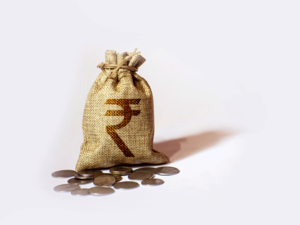 Getty Images
Getty ImagesBrent crude has jumped to a 10-month high and breached $93/barrel in mid-September. It has averaged $83.5 in the past year.
- Both Reuters and EIA have raised Brent forecasts.
- Reuters raised the Brent price forecast to $82.45/barrel for 2023 recently, up from its July consensus forecast of $81.95/barrel. The price is expected to average over $85/barrel in the fourth quarter.
- EIA's short-term energy outlook (STEO) report expects the Brent crude oil price to average $93/barrel in the fourth quarter of 2023, up from its August forecast of $86/barrel.

... even as inflation remained high
Consumer inflation has softened but remains above RBI’s tolerance limit.
- Rising crude prices, if transmitted to retail fuel prices, will lead to higher inflation.
- The impact will be minimal as retail fuel prices are unlikely to increase in the pre-election year.
- Consumer inflation is already above the RBI¡¦s upper tolerance limit. OMCs and government are expected to absorb the impact of higher oil prices.
- RBI¡¦s survey of professional forecasters expects the CPI Combined to average 5.5% and 5.4% in the second and third quarters of 2023-24. In the first quarter of 2023-24, consumer inflation averaged 4.6%.
- The jump in consumer inflation has been mainly due to the rise in food prices.

Rising oil prices dragged the rupee to a 10-month low recently.
- Rise in oil prices leads to rupee depreciation as higher import bill increases demand for USD.
- Higher demand pushes up the value of USD against the rupee. Rupee has weakened from Rs.79.58 to Rs.83.06 in the past year.
- It averaged Rs.82.96 in September 2023, compared to the past oneyear average of Rs.82.23.
- Other factors like a strong dollar index and higher US treasury yields are also contributing to the rupee's weakness.
- RBI intervention is expected to provide support.
- Reuters-Refinitiv forecasts see the USD-rupee exchange rate at Rs.82.9 and Rs.82.7 at the end of third and fourth quarters of 2023-24.

Excise duty cut will increase deficit
Rising oil prices, if managed through excise duty cut, will hit government revenues
- India¡¦s fiscal deficit was at 33.9% of the full-year target between April and July 2023.
- Higher oil prices will put pressure on government finances if it reduces excise duty on fuel.
- Central excise duty constitutes around 20% of the petrol price.
- Excise duty collection between April and July 2023 was Rs.76,200 crore, which is 10% lower compared to 2022-23
- However, the windfall taxes will help cover such revenue losses.

Wholesale inflation poised to rise as well
WPI deflation narrowed in July and August.
- WPI has seen deflation since April this year, but this has narrowed since June.
- ICRA expects WPI to revert to a y-o-y inflation in September 2023 due to the surge in prices of fuel and power.
- RBI¡¦s survey of professional forecasters expects WPI at 1.2% and 2.4% in the third and fourth quarters of 2023-24.

Current account deficit set to widen
Costlier crude will lead to higher forex outgo.
- Analysts believe that every $10 rise in Brent crude prices widens India¡¦s current account deficit (CAD) by 0.5%.
- India imported 87.8% of its crude oil requirement in April-July 2023.
- Indian crude basket averaged $91.75/barrel in September 2023 compared to an average of $80.3/barrel in January-August 2023.
- CareEdge report estimates CAD widening by 20 basis points to 1.8% of GDP in 2023-24 at an average crude price of $90/barrel. It estimated the CAD at 1.6% at $85/barrel.

FIIs are feeling jittery
FPIs turned net sellers in September after six months of positive inflows.
- Industrial fuels like naphtha, fuel oils, lube oils and natural gas will be hit.
- The profit margins of sectors such as aviation, paints, tyres, cement and chemicals will be negatively impacted.
- Depreciating currency amid rising CAD will impact foreign inflows.
- FPIs sold Rs.4,467 crore of equities in September*.
- In the cash market, FPIs sold more than Rs.10,800 crore of equities. *Up to 18 September.

OMCs will suffer as margins shrink
- OMCs' marketing margins will fall due to a continuing freeze in the retail prices.
- Average marketing margins of three OMCs (Indian Oil, BPCL, HPCL) are expected to decline by 68.4% and 40.5% for diesel and petrol, respectively, on a q-o-q basis in the September quarter.
- Despite support from the refining segment, the performance in the second half of 2023-24 is likely to remain muted.
- However, upstream oil producers — ONGC and Oil India — will benefit due to an increase in oil realisations. Windfall taxes will cap gains.


(Your legal guide on estate planning, inheritance, will and more.)
Download The Economic Times News App to get Daily Market Updates & Live Business News.






 Get Unlimited Access to The Economic Times
Get Unlimited Access to The Economic Times

